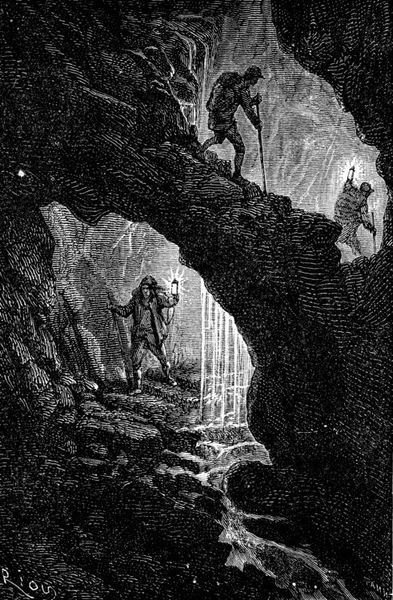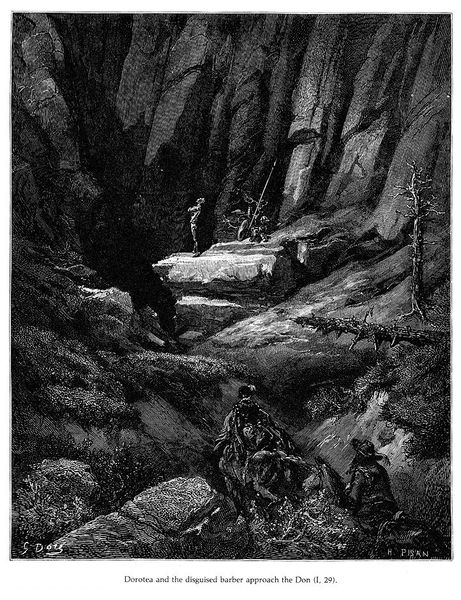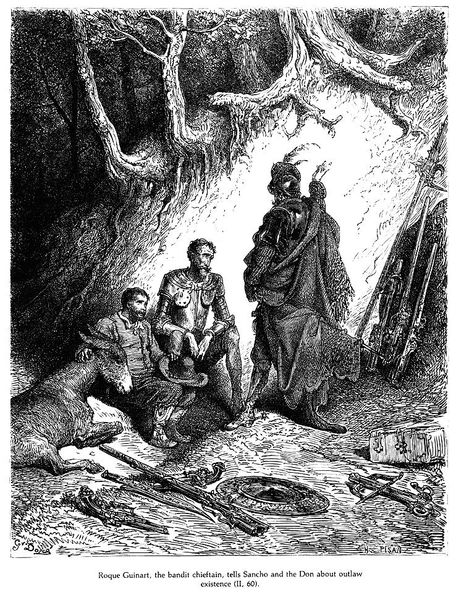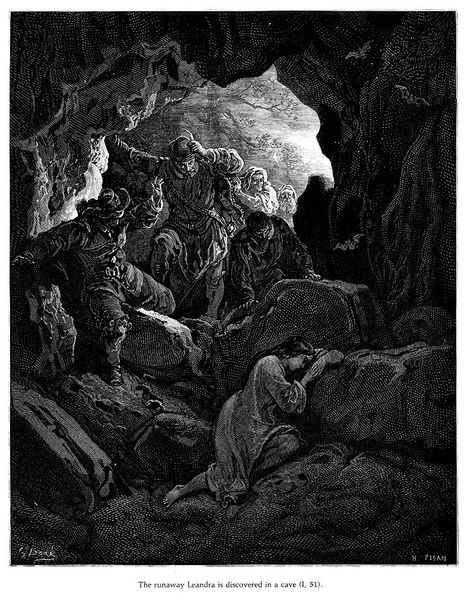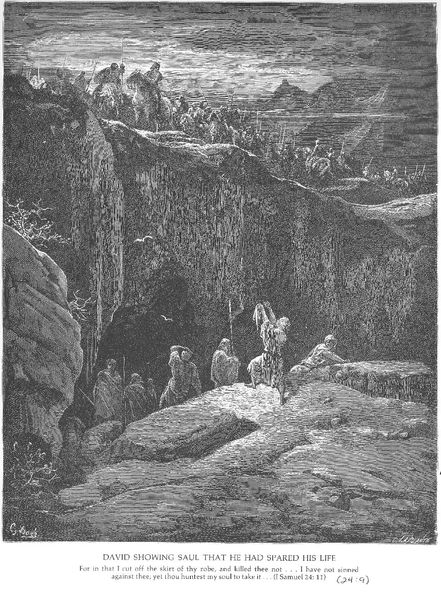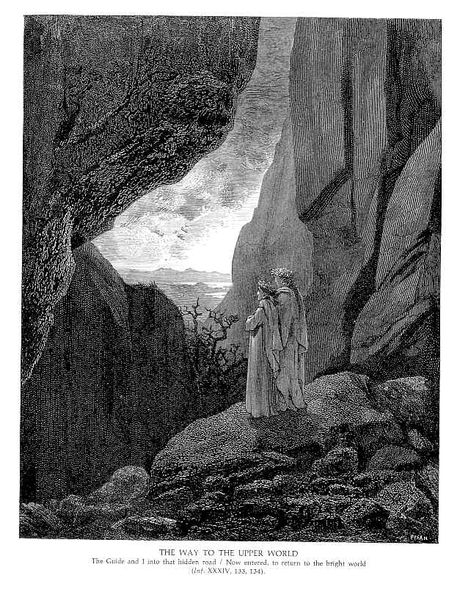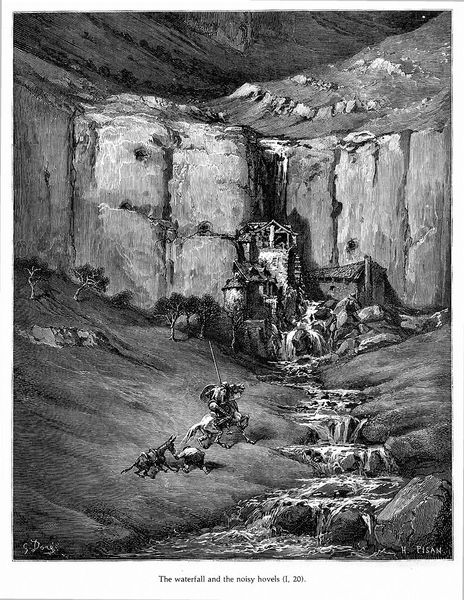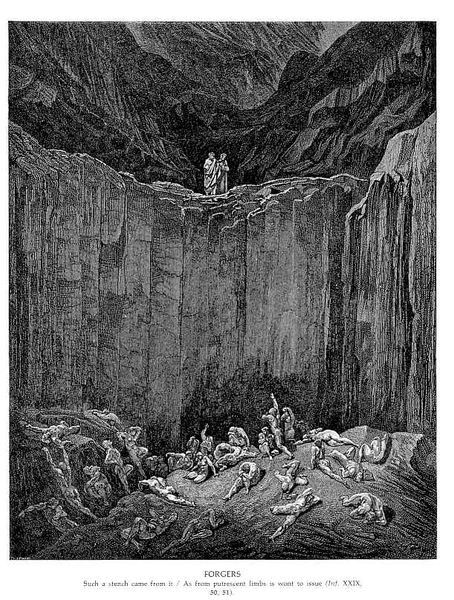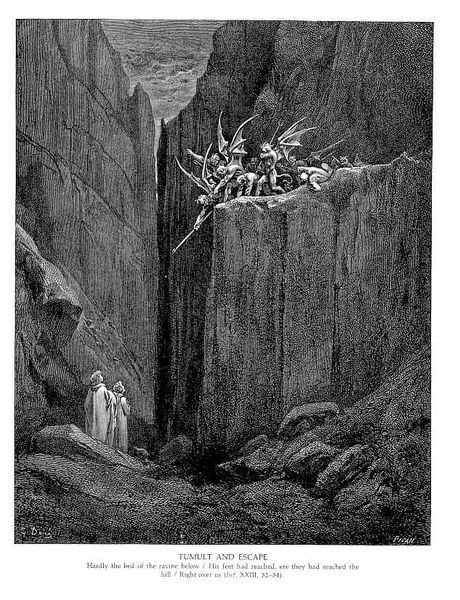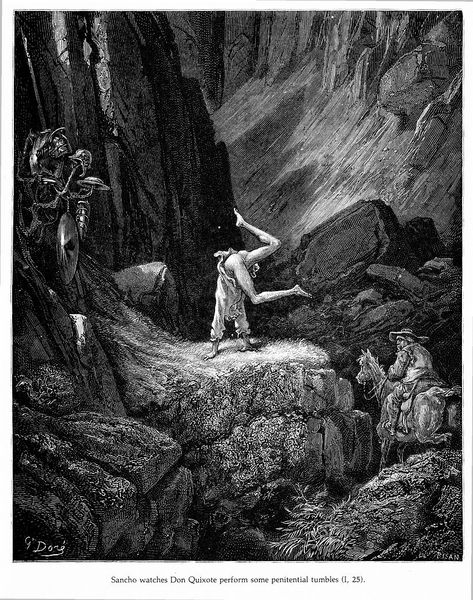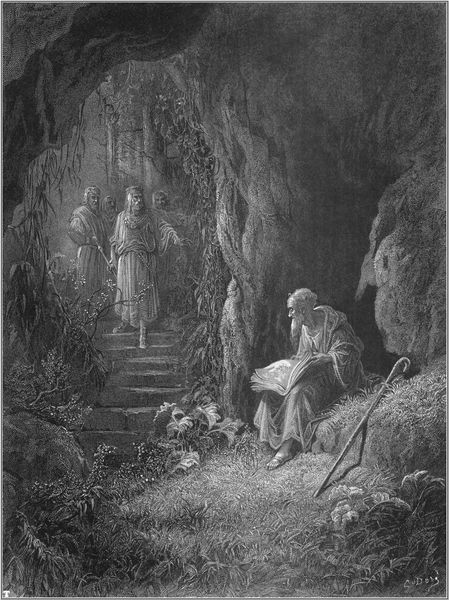
drawing, paper, photography, ink, engraving
#
drawing
#
narrative-art
#
animal
#
landscape
#
figuration
#
paper
#
photography
#
ink
#
rock
#
romanticism
#
horse
#
men
#
history-painting
#
engraving
#
monochrome
Copyright: Public domain
Curator: This intricate engraving presents Gustave Dore’s interpretation of a scene from Don Quixote. Notice the romantic landscape in this monochrome print. Editor: Immediately striking is the contrast. A towering, almost claustrophobic, natural structure looms, dwarfing the figures. It creates a sense of both wonder and vulnerability. Curator: Indeed, the strategic use of light and shadow accentuates this feeling. Dore leverages the medium to render minute details; consider the texture of the rocks and foliage compared with the smoother areas of Don Quixote's armor and his horse's coat. How might these textural differentiations inform our reading? Editor: It heightens the artificiality of the "knight" against nature's grandeur. Dore published these illustrations at a time when Romanticism embraced emotional intensity, and the individual’s struggle with overwhelming forces – what impact do you think the Quixote novel had on contemporary notions of society and individual struggle, through illustrations such as this? Curator: The novel, published centuries earlier, offered a critique of societal norms. Dore’s visual interpretation arguably revitalizes this critique, highlighting Quixote's absurdity. This reinterpretation arrived during France's tumultuous 19th century, influencing contemporary notions. Editor: The positioning of Don Quixote reading while Sancho Panza rests further emphasizes this disparity, but I’m curious about the setting – the rocky landscape gives off a cavernous quality that may symbolize themes of solitude or perhaps even delusion within the narrative structure of the overall artwork, what's your opinion? Curator: The cavern, a space of reflection, becomes emblematic of Quixote’s interiority. Dore masterfully depicts the chasm and, therefore, his subjective realities, employing line and shadow to create not just visual depth but also symbolic resonance. Editor: The impact of Dore’s art extended far beyond illustrating literary classics; he redefined narrative visualization. Exploring these images is like dissecting history under a formalist lens! Curator: Conversely, a historical perspective provides added context to these close readings. I think examining them together allows us to look at all parameters when discussing this artwork.
Comments
No comments
Be the first to comment and join the conversation on the ultimate creative platform.
